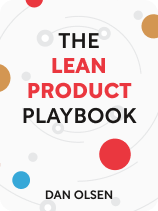

This article is an excerpt from the Shortform book guide to "The Lean Product Playbook" by Dan Olsen. Shortform has the world's best summaries and analyses of books you should be reading.
Like this article? Sign up for a free trial here.
Is your product missing the mark with potential customers? Are you unsure how to connect with your ideal audience?
Understanding your target market is crucial for creating successful products and services. By understanding your customers’ needs, behaviors, and characteristics, you can tailor your offerings to meet their specific demands.
Read on to explore how to know your target market and create products that resonate with your audience.
How to Know Your Target Market
The first step to creating a winning product is building a strong understanding of your target market and their needs. Dan Olsen advises that you thoroughly understand your target customer—get a clear idea of who they are, what problems they experience, and their wants and desires. When you understand all dimensions of your target customer’s lifestyle and needs, you’ll be better able to create a product you know they’ll want to buy.
Olsen’s advice on how to know your target market is twofold: Identify your target customer, and focus on problems instead of solutions.
| The Downfall of Mass Marketing: Why Understanding Your Target Market Is Important It wasn’t always important to identify and research the needs of a target market to create a successful product. In Purple Cow, Seth Godin explains that mass marketing—which uses impersonal ad campaigns aimed at broad audiences—was effective in a time when consumers had fewer choices and were more responsive to mainstream media advertisements. However, nowadays, mass marketing no longer works because people are tired of being advertised to. In fact, people feel so bombarded by ads that they now subconsciously ignore anything that looks like an ad—a phenomenon known as ad blindness. People want products tailored to their specific needs and wants. Because of this, Godin suggests not just learning about your target market, but targeting the smallest market that you can serve effectively to stand out and grab people’s attention. |
Identify Your Target Customer
First, Olsen suggests you create hypotheses about who your target customer is by identifying all relevant characteristics that people in your target market share. Consider four characteristics:
- Demographics—like age and gender.
- Psychographics—like values, attitudes, and interests.
- Needs—for example, the need for fast and efficient meal preparation.
- Behaviors—for example, people who regularly purchase prepared or easy-to-cook food items.
| Conduct Market Research to Segment Your Market Olsen doesn’t specifically elaborate on how to carry out market research to determine the unique characteristics of your target market, but other experts provide some guidance: Demographic segmentation: Demographic information is often the easiest to obtain—options include using third-party sites, consulting public records, or directly surveying customers. Psychographic segmentation: To find information about your target customer’s lifestyle, opinion, and values, use a variety of methods including surveys or questionnaires, social media, focus groups, and third-party data providers. Needs segmentation: Use the jobs to be done (JTBD) framework to identify needs—consider functional, emotional, and social jobs customers seek to accomplish using a product. You can identify customer jobs by reflecting on your personal experiences, observing others, and conducting customer interviews. Behavioral segmentation: To segment based on behavior, use as many data sources as possible, such as surveys, website analytics, and social media platforms. Types of behavioral segmentation include purchasing behavior, timing of purchases, benefits sought, and customer loyalty, engagement, and satisfaction. |
Once you’ve identified your target customer’s attributes, create customer personas that represent your target customer. Personas are detailed, fictional representations of your target customer—including names, representative photographs, relevant quotes, job titles, and so on. They give everyone on your product development team the same understanding of who the customer is. Personas can also help you decide what features to include when designing your product.
Olsen points out that your customer personas are only hypotheses because you can’t predict with complete certainty who will be attracted to your product until it’s actually on the market, so the process of defining your target customer should be continuous and repetitive. As you interact with more potential customers, revise and refine your hypotheses and personas.
| Create Negative Customer Personas Other experts recommend you not only create personas representing your ideal customer, but also negative customer personas—representations of people who are unlikely to purchase your product. Knowing who isn’t likely to buy your product or service helps you focus on the right audience, save your resources, improve your offers, and communicate your message more effectively. As with ideal customer personas, you should also adjust your negative customer personas as you go. Consider three factors when crafting these: 1) Affordability—you don’t want to spend time attracting individuals who are interested in your product but can’t afford it. 2) Unideal Behavior—avoid those who seem close to purchasing but never actually do, who have unrealistic expectations, or who frequently return purchases. 3) Costly Acquisition—avoid those who have a low probability of repurchasing and whose value is less than the cost to acquire them. |
Focus on Problems, Not Solutions
Once you have a clear representation of who your target customer is, explore their problems—but Olsen advises that you don’t yet brainstorm solutions. He argues that, when you start thinking about the possible products, features, or services that can solve your customer’s needs, you narrow your vision and block yourself from generating more creative, less obvious solutions. You may also end up coming up with solutions that don’t resolve the true problems your customers have.
For example, if your target customers are young adults looking to eat healthier, don’t immediately fixate on creating healthy meal plans that are easier to follow. Instead, dig deeper into the complexities of why most young adults tend not to eat healthier. You might realize that a lack of fresh produce is an issue, which can give you an idea for a feature that directly connects local farmers with consumers.
(Shortform note: In Rebel Ideas, Matthew Syed argues that to most effectively examine your customers’ problems, you should consult with a diverse team, which can be better at understanding the problem space than like-minded teams. The problem space is every idea and perspective related to the problem you want to solve. A diverse team offers a multifaceted view of a problem as each member contributes a different viewpoint, providing a wider, clearer, and more complete picture of the problem space. Thus, extending the problem exploration stage with diverse thinking can help you find more innovative and accurate solutions for customer problems.)

———End of Preview———
Like what you just read? Read the rest of the world's best book summary and analysis of Dan Olsen's "The Lean Product Playbook" at Shortform.
Here's what you'll find in our full The Lean Product Playbook summary:
- An entrepreneur’s guide to making the best product on the market
- How to create a new product without gambling on the results
- How and where to find your target market and audience






